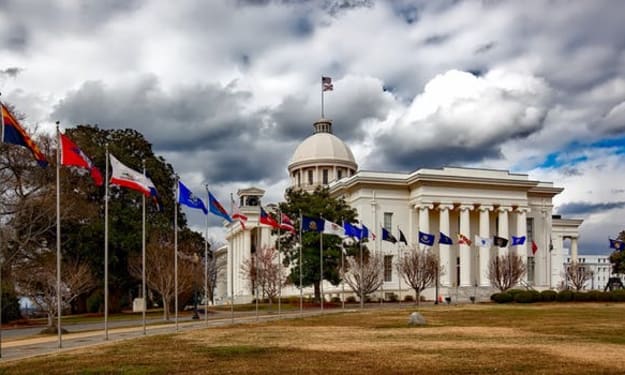Then and Now – How US Presidents have Handled Public Health Crises Through History
Epidemics have come and gone, as have various POTUS, but history does not forget how they handled the epidemics.

Almost every POTUS has been called upon to combat a crisis – political scandal, economic catastrophe, natural disaster, or terrorist attack – during their tenure. Few, however, have had to deal with a long-drawn out pandemic of worldwide significance. The COVID-19 pandemic has sorely tested America’s preparedness for an outbreak of infectious diseases and has posed a serious threat to public health and economy.
This article takes a look at US presidents who faced major public health crises through their tenure.
1. Woodrow Wilson and the Spanish Flu (1918)

Image Credit: Otis Historical Archives, National Museum of Health and Medicine
The popular wartime president had no intention of letting a global pandemic wreck America’s chances of victory in WW1. The Wilson administration downplayed the catastrophic consequences of the Spanish Flu, even when it claimed the lives of 675,000 American soldiers and civilians. It is estimated that more soldiers died from influenza during WW1 than on the battlefield. The war effort, in fact, accelerated the spread of the deadly disease that came in virulent waves and wiped out a quarter of the American population.
For all his activism, President Wilson offered a surprisingly passive response to the Spanish flu. His single-minded focus on winning the war made him indifferent to the public health crisis that was ravaging his country. He failed to publicly acknowledge the Spanish flu, much less address it.
2. Dwight Eisenhower and the Asian Flu (1957)
The Asian flu that made its way into the United States in 1957 was the second large-scale influenza pandemic of the 20th century after the 1918 Spanish flu. Originating in Hong Kong and Singapore, the H2N2 virus killed an estimated 1.1 million people worldwide and 116,000 in the United States. President Eisenhower was fully aware of the global devastation wrought by the pandemic but initially refused to launch a government-funded national vaccination program against the disease. He confidently expected free-market vaccines to bring a quick end to the crisis. Unfortunately, this only resulted in doubling the death toll. Later that year, he asked for and received funding and authorization from Congress to start a nationwide vaccination drive that ultimately succeeded in stopping the disease in its tracks.
3. Gerald Ford and the Swine Flu (1976)
Private David Lewis’s death during a basic training exercise led to dire predictions of an impending swine flu epidemic later that year. Scientists at the Centers for Disease Prevention and Control (CDC) advised vaccinating at least 80% of the US population to prevent its spread. Unlike his predecessors who refused to acknowledge significant public health crises or acted too late to stop them, President Ford demonstrated the government’s preparedness and efficiency in battling a rapidly spreading infectious disease.
He acted quickly, signing emergency papers for the National Swine Flu Immunization Program in mid-April, and approximately 50 million Americans were vaccinated within a few months.
Unfortunately, the flu shot caused hundreds of people to come down with Guillain-Barre syndrome - a rare neurological disorder in which the body’s immune system mistakenly attacks part of the peripheral nervous system.
This led to a general consensus that the President’s better-safe-than-sorry attitude was largely an overreaction. The predicted pandemic fizzled out by the time immunizations began in October 1976. The hasty swine flu vaccination program of 1976 is said to have contributed to many Americans’ distrust of vaccines and was one of the blunders that eventually led to President Ford’s political downfall.
4. Ronald Reagan and the HIV/AIDS Epidemic (1980s)
By the mid-1980s, AIDS was a full-blown epidemic in the United States, that affected and killed thousands of Americans. The CDC had already pinpointed the cause of AIDS and identified its major routes of transmission. But US leaders, including President Reagan, remained mostly silent about this health crisis, refusing to acknowledge its deadly presence. The Reagan administration also failed to recognize the severity of the epidemic and refused to take it seriously. President Reagan’s press secretary is on record referring to the epidemic as the “gay plague.” President Reagan’s attitude to AIDS underwent a dramatic change in 1987, when he declared the epidemic “public health enemy No. 1, and allocated $766 million for AIDS education and research, which increased to $1 billion in 1988. However, his conservative values led him to advocate sexual abstinence for AIDS prevention instead of methods of protection. “Let's be honest with ourselves,” he said. “AIDS information cannot be what some call 'value neutral.' After all, when it comes to preventing AIDS, don't medicine and morality teach the same lessons?” By the end of his presidency in 1989, 89,343 AIDS-related deaths had occurred in the United States.
5. George W. Bush, HIV/AIDS and SARS (2003)
President George W. Bush has been widely praised for his unwavering commitment to fighting AIDS on a global scale. In 2003, the Bush administration set up the President's Emergency Plan for AIDS Relief (PEPFAR), the largest global health program ever to address a single disease. The anti-AIDS initiative has provided more than $80 billion for AIDS research, treatment and prevention, and has helped save millions of lives, most of them in sub-Saharan Africa.
President Bush actively supported the battle against Severe Acute Respiratory Syndrome (SARS) and other pandemics. In April 2003, after a SARS outbreak in Asia, President Bush signed an executive order that added SARS to a list of communicable diseases that allow for people to be involuntarily quarantined. In 2005, President Bush was responsible for creating the National Strategy for Pandemic Influenza, a national initiative to stockpile medical supplies in the event of a public health crisis. This initiative also serves as infrastructure to help future presidents deal with future pandemics.
6. Barack Obama and Swine Flu (2009-10)
President Obama’s first term was marked by the H1N1 (swine influenza) epidemic, which was first detected in April 2009 in the United States, and quickly spread across the world. President Obama responded immediately, putting together a team to combat the disease and declaring it a public health crisis. His response came six weeks before swine flu was declared a pandemic and before any deaths had occurred in the US. In late 2009, he declared swine flu a national emergency after it claimed over 1,000 American lives.
Despite the Obama administration’s quick and comprehensive response, in terms of scientific research, vaccine generation, and public health measures, there were more than 12,000 deaths in the US. The swine flu pandemic finally ended in August 2010.
7. Donald Trump and COVID-19 (2020-21)
The first signs of the novel coronavirus appeared in early January 2020. The initial cases quickly developed into a full-blown pandemic that has the dubious distinction of being the worst public health crisis the world has faced in more than a century. It also took a heavy toll on the United States, claiming more than 600,000 lives across the country. It significantly affected daily life in the US, impacted the economy and led to widespread school closures.
President Trump ignored burgeoning infection rates, and spurned international cooperation. He failed to develop a national strategy to combat the disease, which in turn exacerbated shortages of diagnostic tests and protective equipment.
Unfortunately, some of the decisions that President Trump’s administration took contributed to America’s unpreparedness for COVID-19. The pandemic then emerged as a crucial factor in the 2020 Presidential election results.
As President Biden settles into office and takes various steps to fight the pandemic, time will tell, if this POTUS took good decisions.
Wrapping Up
POTUS is expected to be optimistic in the face of disaster, even as they offer full support, hope and good information to all Americans and the rest of the world. More importantly, they must be transparent, prevent the proliferation of rumors and false information, and create credibility that encourages people to follow guidelines.
About 'The White House' image:
Photo by David Everett Strickler on Unsplash
About the Creator
Aileen Brent
Aileen enjoys blogging about STEM. She likes the fact that she is a part of the hum of life, something that she likes exploring and knowing better. You can follow her personal blog here.






Comments
There are no comments for this story
Be the first to respond and start the conversation.